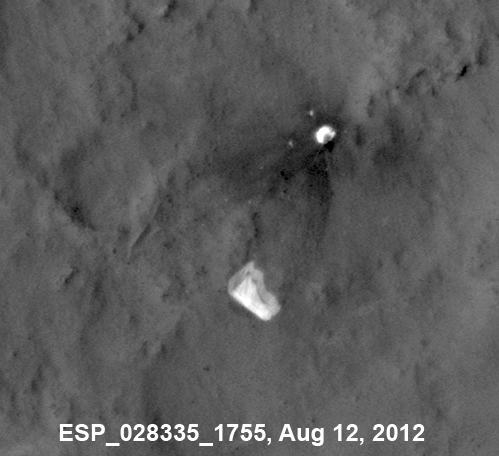Mars Reconnaissance Orbiter used parachute flaps in the wind

(Phys.org) —Photos from NASA's Mars Reconnaissance Orbiter show how the parachute that helped NASA's Curiosity rover land on Mars last summer has subsequently changed its shape on the ground.
The images were obtained by the High Resolution Imaging Science Experiment (HiRISE) camera on Mars Reconnaissance Orbiter.
Seven images taken by HiRISE between Aug. 12, 2012, and Jan. 13, 2013, show the used parachute shifting its shape at least twice in response to wind.
Researchers have used HiRISE to study many types of changes on Mars. Its first image of Curiosity's parachute, not included in this series, caught the spacecraft suspended from the chute during descent through the Martian atmosphere.
HiRISE is operated by the University of Arizona, Tucson. The instrument was built by Ball Aerospace & Technologies Corp., Boulder, Colo. The Mars Reconnaissance Orbiter Project and Curiosity are managed by NASA's Jet Propulsion Laboratory, Pasadena, Calif., for NASA's Science Mission Directorate, Washington. JPL is a division of the California Institute of Technology in Pasadena.
Provided by NASA





















